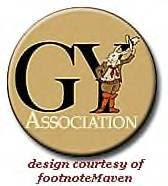Written based on research compilations by Angela Lucius
I have always loved Blues Music, especially from artists that were
born in or lived in Mississippi.
Memphis Minnie was one of the most influential women of the day
when it came to singing a good Blues song. She was born Lizzie
Douglas in Algiers, Louisiana on June 3, 1897. She
was the eldest of thirteen siblings born to Abe and Gertrude Douglas,
who nicknamed her Kid when she was just a little tyke.
When she was 7 years old she and her family moved to Walls,
Mississippi, a tiny town located South of Memphis where they had a
farm. The following year she received her first guitar for
Christmas. She learned to play the banjo by the age of 10 and the
guitar by the age of 11, when she started playing local parties.
When she first began performing she played under the
name Kid Douglas, because she did not like being called Lizzie.
The family later moved to Brunswick, Tennessee, but after Minnie's
mother died in 1922, her father moved back to Walls, Ms, where he
died thirteen years later in 1935.
In 1910, at the age of 13, she ran away from her home to live on Beale
Street in Memphis, Tennessee to play for tips at Church's Park
( the current W.C. Handy Park), She played on street corners for most
of her teenage years, although she would periodically return to her
family's farm in Walls when she ran out of money. Her sidewalk
performances on Beale Street led to a four year tour of the South with
the Ringling Brothers Circus from 1916 to 1920, at which time she
returned to the Memphis Beale Street scene.
At the time, women were highly valued-along with whiskey and cocaine-and Beale Street was one of the first places in the country where women
could perform in public. In order to survive financially, most of the female
performers on Beale Street were also prostitutes, and Minnie was no
exception. She received $12 for her services an outrageous fee for the time.
Minnie was suspected to have been married three times. Although no
evidence has been found of any marriage certificates, her first husband is
usually said to have been Will Weldon who she married in the early 1920s,
also known as Casey Bill.
However, some historians claim the two didn't meet until their first
recording sessions together in 1935 and never married. If she did
marry Weldon, she had left him within the decade.
Her second husband or some say common law husband, was guitarist
and mandolin player
Joe McCoy (aka Kansas Joe McCoy) whom she supposedly married
in 1929. She and Kansas Joe McCoy began to perform together.
They were discovered by a talent scout of Columbia Records in front
of a barber shop where they were playing for dimes. They went to
New York City for their first recording sessions, and it was then that she
changed her name to Memphis Minnie. In 1930, Minnie released one of
her favorite songs "Bumble Bee," which led to a recording contract with
the Vocalion label. The couple continued to produce records for
Vocalion for two more years, then left the label and decided to move to
Chicago. It didn't take long before Minnie and McCoy had become a part
of the city's blues scene, and they had introduced country blues into an
urban environment.
McCoy and Minnie recorded songs together and on their own for Decca
Records until they divorced in 1934. According to several reports,
McCoy's increasing jealousy of Minnie's fame and success caused the
breakup. The two-part single "You Got To Move (You Ain't Got To
Move)" was the last record issued by the couple."
Minnie was also reported to have lived with a man known as "Squirrel"
in the mid- to late 1930s, although I was unable to verify this.
Back on her own, Minnie began to experiment with different styles and
sounds. She recorded four sides for the Bluebird label in 1935 under the
name Texas Tessie. They included "Good Mornin'," "You Wrecked My
Happy Home," "I'm Waiting on You," and "Keep on Goin'." In August of
that year, she returned to the Vocalion label to record two songs in tribute
to boxing champion Joe Louis: "He's in the Ring (Doing That Same Old
Thing" and "Joe Louis Strut." Columbia later released "He's in the Ring"
on the collection The Great Depression: American Music in the '30s in 1994.
Top row: Ernest (Little Son Joe) Lawlars, Bill (with guitar), Lester Melrose,
Roosevelt Sykes, St. Louis Jimmy Oden;
In 1939, she met guitarist Earnest Lawlars (aka Little Son Joe).
He became her new musical partner and they married shortly thereafter.
Son Joe dedicated songs to her including "Key to The World" in which
he addresses her as "the woman I got now" and calls her "the key to the
world."
Minnie and Little Son Joe also began to release material on Okeh
Records in the 1940s. Their earliest recordings together included
"Nothin' in Ramblin'" and "Me and My Chauffeur Blues."The couple
continued to record together throughout the decade. In 1952, Minnie
recorded a session for the legendary Chess label, when it was just
two months old. Singles from the session included "Broken Heart"
and a rerecording of "Me and My Chauffeur Blues." The
following year, she released her last commercial recording after 24
years in blues music,
"Kissing in the Dark" and "World of Trouble" on the JOB label.
Later in the 1940s Minnie lived in Indianapolis, Indiana and Detroit,
Michigan, returning to Chicago in the early 1950s.
However, poor health prompted her to return to Memphis and forsake
the musician's life in 1958. She performed one last time at a memorial
for her friend, blues artist Big Bill Broozny in 1958. Periodically, she would
appear on Memphis radio stations to encourage younger blues musicians.
As the Garons wrote in Woman with Guitar, "She never laid her guitar
down, until she could literally no longer pick it up."
In 1960, Minnie suffered from a stroke and was bound to a wheelchair.
The following year, Little Son Joe passed away. The trauma provoked
Minnie to have a second stroke.
By the mid1960s Minnie had entered the Jell Nursing Home and she
could no longer survive on her social security income. The news of her
plight began to spread, and magazines such as Living Blues and
Blues Unlimited appealed to their readers for assistance.
Many fans quickly sent money for her care, and several musicians held
benefits to help her. On August 6, 1973, Memphis Minnie died of a
stroke in the nursing home. In true blues fashion, she was buried in an
unmarked grave at the New Hope Cemetery in Memphis, Tn.
A headstone paid for by Bonnie Raitt was erected by the Mt. Zion
Memorial Fund on October 13,1996 with 35 family members in
attendance including her sister, numerous nieces (including Laverne
Baker) and nephews. The ceremony was taped for broadcast by the BBC.
Her headstone is marked:
Lizzie "Kid" Douglas Lawlers
aka Memphis Minnie
The inscription on the back of her gravestone reads:
"The hundreds of sides Minnie recorded are the perfect material
to teach us about the blues. For the blues are at once general,
and particular, speaking for millions, but in a highly
singular, individual voice. Listening to Minnie's songs we hear her
fantasies, her dreams, her desires, but we will hear them as if they
were our own"
For nearly three decades, Memphis Minnie was one of the most
influential blues artists in the United States. From the early 1920s
until she retired in the mid1950s, she released more than 180 songs,
in addition to those released after her death in 1973.
She cemented her place in blues history with such classics as
"Bumble Bee," "Hoodoo Lady," and "I Want Something for You."
Her repertoire included country blues, urban blues, the Melrose sound,
Chicago blues, and postwar blues.
In 1980, Memphis Minnie was one of the first 20 artists inducted into
the Blues Hall of Fame. Her work was featured on several blues
compilations throughout the 1980s and 1990s.
Compilations of her own work also continued to surface, including
I Ain't No Bad Girl in 1989 and Queen of the Blues in 1997.
The home she once lived in still exists at 1355 Adelaide Street
in Memphis, Tennessee.
Listen to Memphis Minnie courtesy of Youtube
Sources
Garon, Paul and Beth, Woman with Guitar: Memphis Minnie's Blues , Da Capo Press, New York, 1992.
American Heritage , September 1994.
Down Beat , May 1995; March 1998.
High Fidelity , April 1989.
http://www.blueflamecare.com/Memphis_Minnie.html (September 23, 1998).
http://www.memphisguide.com/music2/blues/bluesartists/minnie.html (September 23, 1998).
Harris, S (1989). Blues Who’s Who, 5th paperback edition. New York: Da Capo Press.
Gravestone Photo courtesy of Thomas R. Machnitzki
Wikimedia Commons has media related to Memphis Minnie.
Listen to "When the Levee Breaks" at the "Internet Archive" (archive.org)
Delta Blues Bio and Samples of "Bumble Bee Blues" and "Soo Cow Soo"
Find A Grave Memorial
Mount Zion memorial Fund
Amazon.com
Cr.nps.gov
Discogs.com
Sundayblues.org
Sonya Shelton
Youtube.com
Eil.com Kansas Joe McCoy photo
Highway61radio.com
thepastblues.com


+-+LP+RECORD-549393.jpg)




















